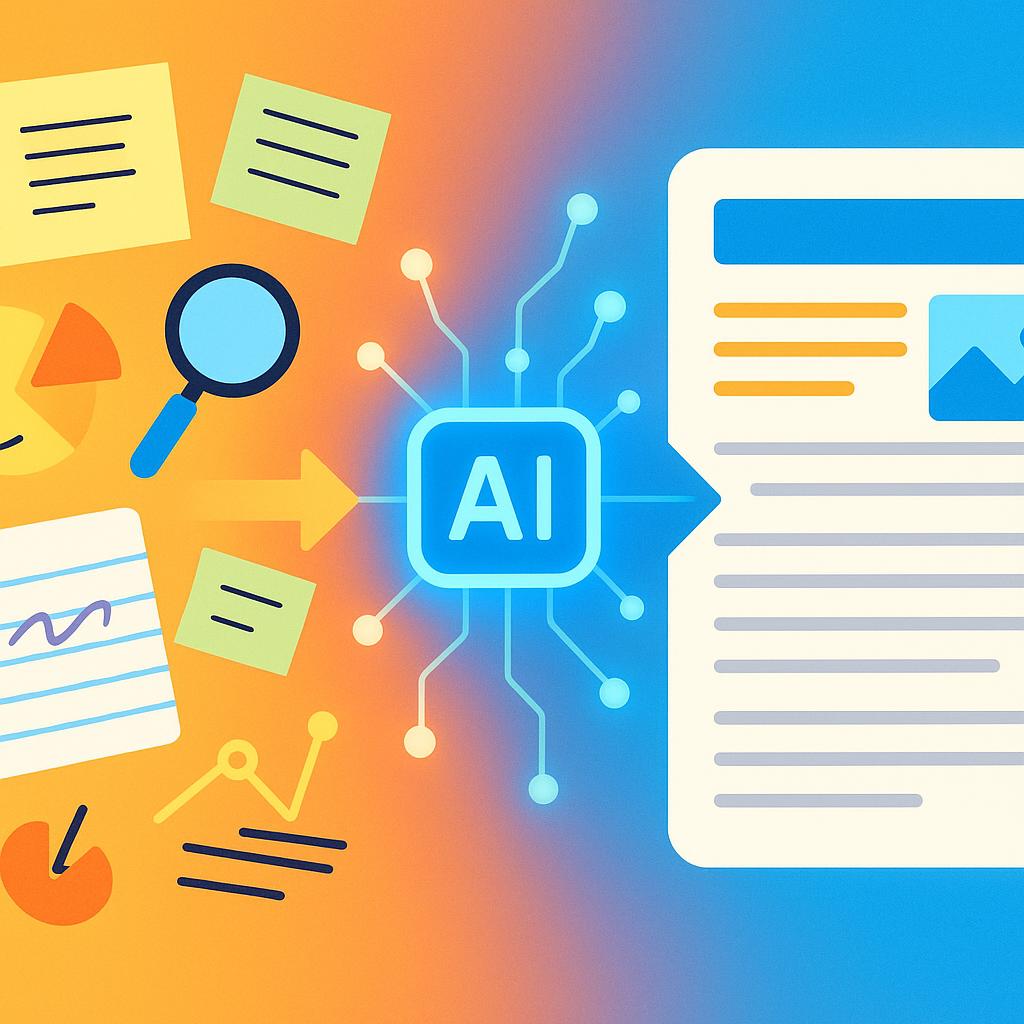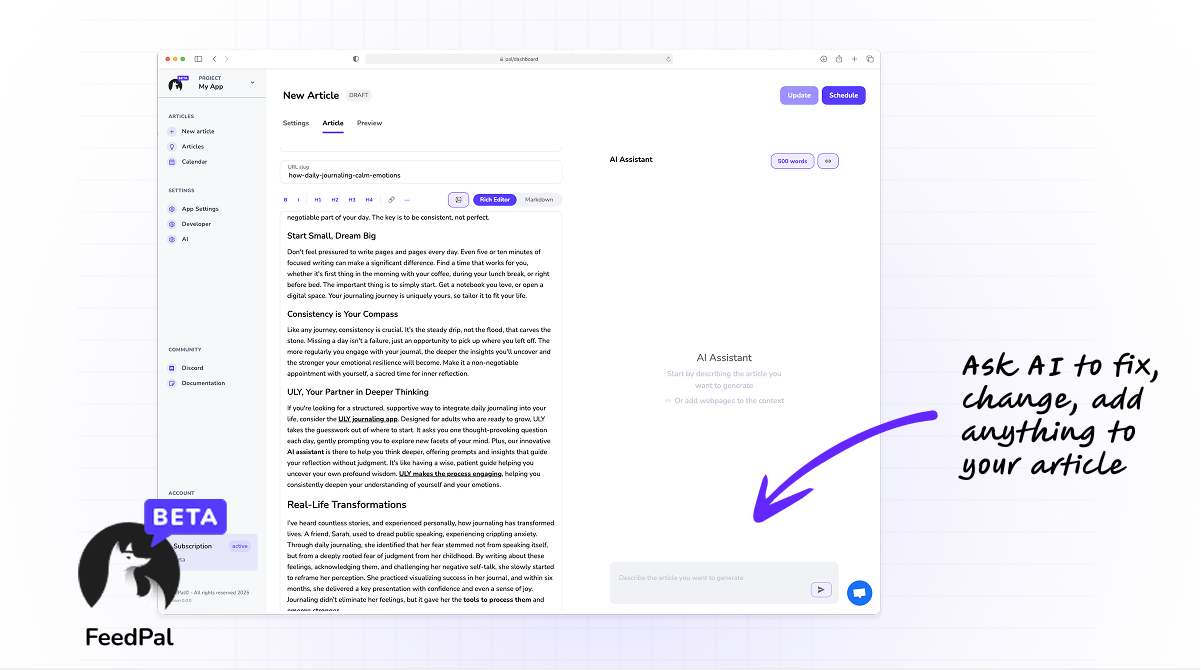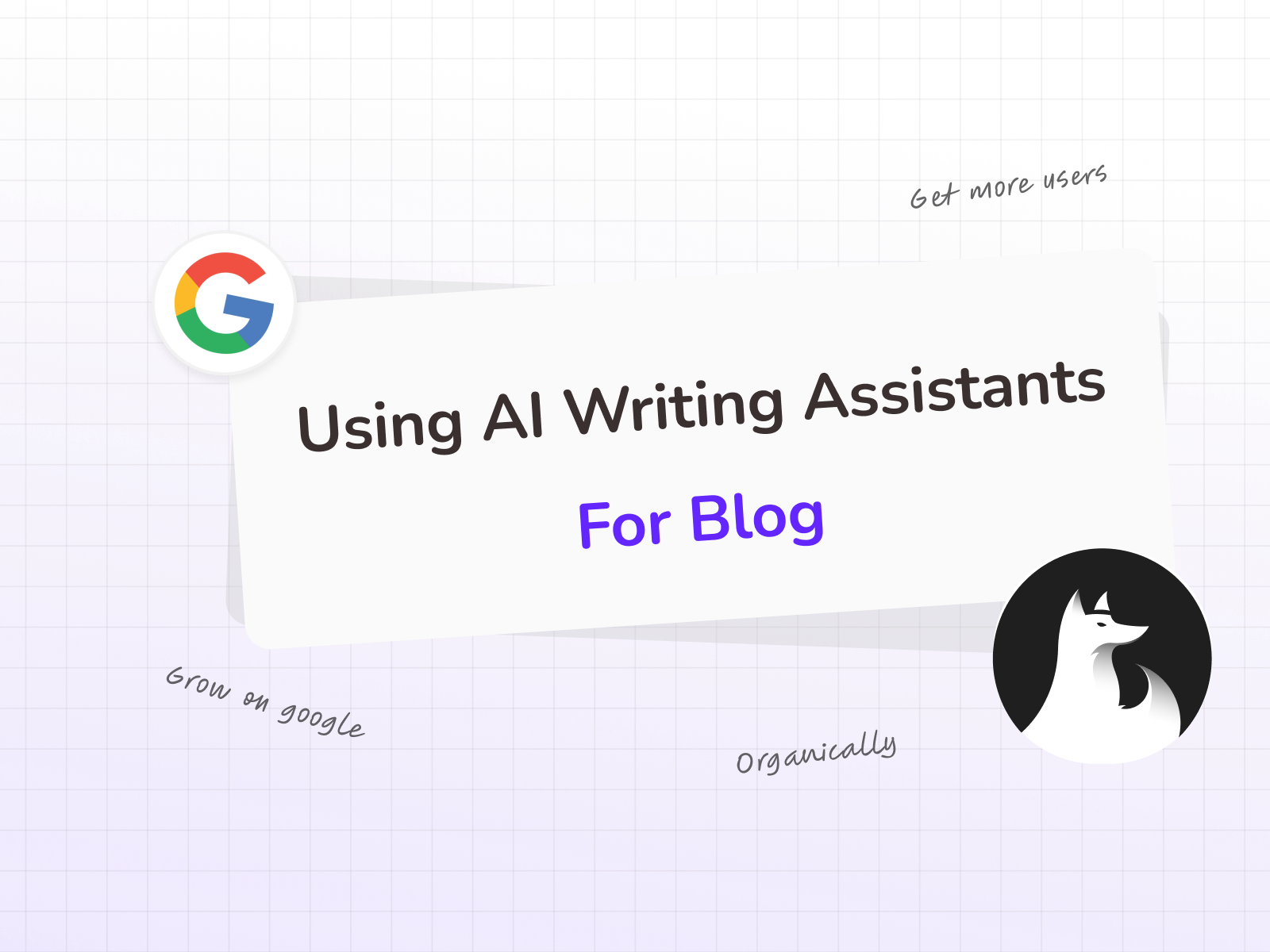Everyone's saying 'content is king'.
But how on earth do you keep up with the endless need for fresh, engaging stuff?
It often feels like a treadmill that just never quits, doesn't it? Well, that's exactly where AI writing assistants come in, completely changing how we tackle content creation.
These smart tools aren't some distant futuristic dream anymore.
They're a powerful reality right now, totally ready to ramp up your content output without letting quality slip one bit.
Ready to truly unlock AI's full potential for your blog, website, or mobile app?
Let's jump into some practical tips. We'll see how to use AI writing assistants to create a working content strategy.
The Power of AI in Content Creation
Just think about the old way of creating content.
It often means tons of research, brainstorming ideas, outlining, drafting, editing, and then optimizing.
Every single one of those steps takes a lot of time.
Especially when you're trying to be consistent and put out a lot of material. That's exactly where AI writing assistants helps, offering a truly game changing solution.

Tools like FeedPal are built to make this whole process way smoother. Got an idea? With just a click, they can help you generate a published, SEO optimized article that genuinely pulls in organic traffic.
80% of educational content is just already made. Instead of manually searching for already ranked articles and trying to provide at least the same amount of information.
An AI writer will give you a ready to improve version of the article.
Writer's block? Gone in an instant. A blank page suddenly turns into a detailed outline, or even a full first draft, right there in front of you. This means content creators can churn out more articles in less time, seriously boosting your visibility on search engines.
But AI does more than just generate text. It can also help with vital stuff like keyword research and localizing your content.
This means you can easily tweak your message for different audiences or even reuse old content across various platforms. It's surprisingly simple. For example, a recent Statista study pointed out that the global AI content generation market is set to grow big time, really showing how much it's being picked up and impacting industries everywhere.
Mastering Prompt Engineering for Optimal Results
Squeezing the most out of an AI writing assistant isn't as simple as just clicking a button. It's truly about knowing exactly how to communicate with it. That's where prompt engineering matters. The clearer your instructions, the better the results you'll see.
But that's not only that.
AI writer will hide you all the different prompts and steps to generate a good first version of your article. But if you wanna try to do it here's how you can get started :
First off, be specific and crystal clear. Steer clear of fuzzy requests such as 'write about marketing.' Instead, try something much more detailed. For example, 'Write a 500 word blog post for small business owners about effective social media marketing strategies. Focus on Instagram and Facebook, and make sure the tone is friendly and encouraging.' See the huge difference? You're spelling out the length, who it's for, the exact topic, the platforms, and even the tone.
Next, give it some context. If there are specific points you want included, or a certain angle you're aiming for, definitely put those right into your prompt. Maybe you'd say, 'Make sure to weave in these three benefits of social media: boosting brand awareness, enabling direct customer engagement, and offering cost effective advertising.' This really steers the AI straight toward what you're hoping to get.
Third, lay out the format and structure. Do you need an outline, a listicle, or a step by step guide? Just spell it out clearly. An example might be, 'Generate an outline for a blog post on healthy breakfast ideas. Include sections for quick options, high protein choices, and vegan recipes.' This really helps the AI put the content together in a sensible way.
Finally, tweak and refine. If the first output doesn't quite hit the mark, don't throw in the towel. Just adjust your prompt based on what the AI gave you. Perhaps you need to be more precise about the tone, or maybe you forgot a key keyword. It's a back and forth process, a lot like polishing up a rough diamond until it shines.
The Human Touch: Editing and Refinement
AI writing assistants are incredibly powerful, sure, but remember they're just tools. They're not here to replace human creativity or good judgment.
Instead, think of AI as an apprentice who whips up the first draft.
Then, you, the expert, step in to refine and really improve it.
This human oversight is absolutely key for making sure everything is top notch and truly original. We really want to take the best of AI and save time to create good content.

Your part in the editing process involves a few really important steps. First off, you'll need to polish up the prose. AI generated stuff can sometimes feel a little generic, or just plain miss your brand's unique voice.
So, go ahead and inject your personality, a bit of humor, or those specific industry insights only you have. Make sure the flow feels natural and keeps readers hooked, shortening sentences and making them more impactful whenever it makes sense.
Second, double check the accuracy and originality.
We'll dive into fact checking more deeply in a bit, but it's worth saying again right here: always, always review the content to make sure it's factually correct. And even though AI tries to be original, cross reference things to be sure there aren't any accidental similarities with other existing content out there. A recent survey actually pointed out that 80% of marketers feel human editing is vital for AI generated content to keep its quality and brand voice intact.
Third, infuse your unique value. What truly makes your content pop? It's usually your distinct perspective, genuine real world examples, personal stories, or those fresh insights. AI just can't replicate true experience or a genuinely new idea. This is your chance to inject the creativity and strategic thinking that only a human brain can offer.
Fact Checking and Ensuring Accuracy
One of the absolute most important steps when using AI generated content is really rigorous fact checking. Sure, AI models learn from massive amounts of data. But sometimes, they can spit out info that's plain wrong, out of date, or even totally made up. This little quirk is often called "hallucinations," and it's a pretty big risk if you publish content without properly double checking it.
So, how exactly do you make sure it's accurate?
First, cross reference with several reputable sources. Never just trust one piece of information, especially if it came from AI. Look at academic papers, official government sites, industry reports, and well known news outlets. For example, if the AI brings up a certain statistic, hunt for that stat from at least two or three separate, trustworthy sources just to confirm it's legit.
Second, be super cautious about statistics and claims that don't have citations. If the AI mentions a study or a percentage, just assume it needs to be verified. Google the claim and try to find the original source. If you can't dig up a reliable source, it's best to rephrase it or just ditch the claim completely.
Third, get a real handle on AI's limitations. AI doesn't 'know' things the way humans do. It simply predicts the most likely next word based on all the data it was trained on. This means it totally lacks true comprehension or critical thinking. So, it's totally on you to be the critical filter, making sure the content you put out is both truthful and trustworthy.
Integrating AI into Your Workflow for Maximum Impact
So, how exactly can you smoothly blend AI into your current content workflow to really get the most out of it? It's about more than just drafting articles. It's about fine tuning the whole content lifecycle.
Start by having AI help with brainstorming and outlining. Stuck with writer's block? Just ask your AI assistant for content ideas based on a keyword or topic. It can whip up a list of headlines, subheadings, or even full article outlines. This saves a ton of valuable time at the very beginning, letting you jump quickly from a concept right into a solid structure.
Next, really lean on AI for generating those first drafts. This is where AI genuinely shines when it comes to boosting your output. Instead of just staring at a blank screen, you can have a solid foundation to start with. This frees you up to focus on refining, injecting your unique voice, and making sure everything aligns strategically, rather than getting bogged down in just putting together the initial sentences.
And critically, bring AI in for SEO optimization. Our product, FeedPal, is specifically built to help you craft SEO optimized articles directly. AI can suggest the right keywords, pick apart competitor content, and even fine tune headings and meta descriptions. All of this helps push your search engine rankings and overall visibility higher.
Think about repurposing content and localization. Got a fantastic blog post that you could turn into a bunch of social media updates, an email newsletter, or even a short video script? AI can totally help you adapt your content for various platforms and audiences. And if you're aiming for a global reach, AI can lend a hand with localization, perfectly tailoring your content to those specific regional nuances.
Lastly, don't forget the importance of content scheduling and distribution. Once your article is absolutely perfect, FeedPal lets you schedule your blog articles directly. This makes sure you're publishing consistently. Plus, for businesses with mobile apps, you can use our API or plugin to show your articles right inside your app. It's a seriously effective way to re engage your current mobile app users with fresh, valuable content, keeping them hooked and coming back for more.
Ethical Considerations and Responsible AI Use
Just like with any powerful tech, using AI writing assistants comes with its own set of ethical responsibilities. It's super important to make sure your content stays original and doesn't accidentally step on anyone's intellectual property. Always check for originality, and give credit where it's due. This is especially true if the AI pulls specific data or quotes.
Also, keep potential biases in mind. AI models learn from existing data, and that data can sometimes carry societal biases. So, always review your content to make sure it's inclusive and fair. A thoughtful, ethical approach to AI content creation doesn't just build trust with your audience. It truly upholds your brand's integrity too.
Conclusion
AI writing assistants are truly shaking up the content world, opening up incredible chances to boost what you produce and how visible you are. By truly mastering prompt engineering, embracing the absolutely vital role of human editing and fact checking, and smartly weaving AI into your workflow, you can use these tools to their maximum potential. Just remember, AI is a powerful assistant. It's built to boost your abilities, not to take over. So, are you all set to transform your content strategy and drive more organic traffic?
Tools like FeedPal can literally automate your blog content creation, taking it from a raw idea to a published, SEO optimized article.

The future of content creation? It's definitely here. And it's smart, efficient, and just waiting for your human touch.
